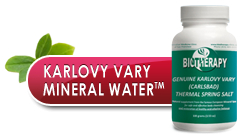SIBO is the old condition-intestinal dysbiosis with the new name- Small Intestine Bacterial Overgrowth. Intestinal Dysbiosis also called “dysbacteriosis,” “bacterial imbalance,” increased levels of harmful bacteria, and reduced levels of the beneficial bacteria.” It is a term for a microbial imbalance inside the GI tract. The Russian Nobel Prize laureate Elie Metchnikoff introduced the term “dysbiosis” one hundred years ago. Nowadays, thousands medical papers confirm the vital role of beneficial intestinal bacteria in digestion, metabolism, immunity, mood, hormones.
By medical literature, SIBO commonly occurs after the course of antibiotics or gastric acid suppressors. Strangely enough, but the fact is the primary medical treatments of SIBO are also antibiotics. It is a medical paradox when for a treatment of disease is used medication that causes it. It is a dead end, after temporarily decreasing of gas and bloating, in the long run, a condition is getting worse. We won the battle but lost the war.
Many persons with the functional, structural, and final stages of chronic pancreatitis suffer from the constant gas and bloating problem after meals. Numerous of them have intestinal dysbiosis. It is a combination of Candida-yeast overgrowth and Small Intestinal Bacterial Overgrowth (SIBO). Candida-yeast is a usual resident in the GI tract in many healthy people and starts to cause health problems only if there is the opportunity to multiply. To detect overgrowth, special tests that rarely are used in common practice, are necessary. Thanks to technology, noninvasive breathing tests may diagnose bacterial overgrowth in the small intestine. It is a possible reason that doctors have focused on SIBO the last decade.
For people with digestive (pancreatic) problems including regular gas, bloating, flatulence, abdominal pain or cramps, halitosis, foul smelling stool it is critical to know the reasons for that. Knowing it helps to reduce the symptoms and improve digestion for persons with chronic pancreatitis.
Many factors can lead to bacteria and Candida-yeast overgrowth in the small intestine. It often causes problems in digestion and thus, the entire body.
The absorption generally occurs in the small intestine, in a narrow tube about 23 feet long and 1-1.5 inches in diameter. Almost all digestion happens in this tube. Mather Nature does not like to feed invaders, so there are very little bacteria at this location. It must be emphasized again that the small intestine is designed for digestion, and that microbes and yeast are not allowed access. Otherwise, harmful invaders would eat our food and nutrients and starve us.
In healthy conditions, a number of microorganisms in the small intestine is very low. Knowing the ways, which control the microorganisms in the GI tract, may give the clue for healing.
All microorganisms and parasites, which we can obtain from food and water, travel to the stomach. The first strong guard of the GI tract; gastric acid, kills many microorganisms. Stomach acid serves as a barrier against bacteria. Because extreme acidity in the stomach kills the germs, little can survive passage through this hostile environment. When the stomach acid is suppressed, however, bacteria, yeast, and parasites may travel through, thrive, and cause trouble.
Some of the invaders, which survive in the stomach, move into the duodenum – the beginning of the small intestine. When the acidic gastric content escapes into the duodenum, a flow of bile is released
from the gallbladder, while simultaneously the pancreatic gland releases the pancreatic juice. Here the semi-fluid digested food from the stomach is neutralized by pancreatic juice and bile, which are extremely alkaline in nature.
Pancreatic juice contains potent antimicrobial substances, which make the pancreatic juice sterile. The enzymes that are designed to digest the proteins also digest unwanted visitors such as microbes, yeast, viruses, and parasites. Antimicrobial action of pancreatic juice makes the environment inside the small intestine clear and unfriendly for microbes and yeast. On the other hand, antimicrobial action of pancreatic juice also has a self-defense mechanism by killing the unfriendly bacteria. This process prevents infections of the pancreas and bile system by restricting bacteria from traveling through the duodenum to the pancreatic duct and gallbladder. Antimicrobial activity of the pancreatic juice depends upon pH. Alkalinity increases it, but acidity diminishes the antimicrobial activity of the pancreatic juice what we can often see in the case of SIBO.
The stomach of a person with SIBO looks like a balloon because of continuous fermentation and gas production in the small intestine. Producing and releasing a normal amount of good quality bile and pancreatic juice is vital to fighting with Candida-yeast overgrowth and Small Intestine Bacterial Overgrowth.
In healthy conditions, there is a minimum possibility of the survival of microorganisms in the small intestine. 2.5 quarts of bile and pancreatic juice plus about 2 quarts (1.8 liters) of intestinal juice are discharged into the small intestine each day. This “river” flashes out the unfriendly bacteria out of the small intestine as well.
The intestinal mucosa produces secretions that primarily contain mucus, electrolytes, and water that enter the small intestine. This liquid mass moves fast through the small intestine. The unfriendly bacteria do not have the possibility to attach to the intestinal wall. High flow rates make it difficult for bacteria to colonize the small intestine because they are washed out very quickly.
Next, the small intestinal tube has three openings – three gates. Why are these three gates mentioned? Because of bacteria, yeast and parasites can enter the small intestine only through these three openings.
One gate is at the beginning of the small intestine (duodenum). Here is a muscle valve that is called the pyloric valve. Semi-digested food from the stomach goes throughout this opening into the duodenum. If pyloric valve opens early, the gastric acid does not have enough time to kill microorganism. Thus, harmful bacteria, yeasts, parasites enter the duodenum.
The second gate is the Sphincter of Oddi – the opening in the duodenum where the pancreatic juice and bile go in the small intestine. The sphincter of Oddi dysfunction and SIBO are typically occurred together in person with the pancreatic disorders.
The third gate is located at the very end of the small intestine (ileum). Here is a valve – the ileocecal valve that connects it to the first part of the large intestine (cecum). The ileocecal valve has two main functions. The first is to prevent the backflow of fecal contents with bacteria and yeasts from the colon to the small intestine. The first is to prevent the backflow of fecal mass with bacteria and yeasts from the colon to the small intestine. Next is to avoid the mass of the small intestine from passing into the large intestine prematurely.
If all gates work properly, there is no overgrowth of bacteria or yeast in the small intestine.
The healthy immune cells fight and kill the unfriendly microorganisms inside the small intestine, as well. Unfortunately, the malfunction of the immune system in the person with chronic pancreatitis is common.
The major factor that prevents the Candida-yeast, parasites, and harmful bacteria enter the small intestine is the beneficial intestinal flora.
How Does Small Intestinal Bacterial Overgrowth (SIBO) Occur?
It can be easy to understand the reasons that lead to Small Intestine Bacterial Overgrowth – SIBO in person with chronic pancreatitis. If the stomach acidity is diminished, the exocrine pancreatic function and antibacterial action of pancreatic juice are reduced, the ileocecal valve opens, the immune system is weak, or the friendly intestinal flora is killed, and then the small intestine receives the harbor of microbes, viruses, yeast, and parasites.
These microorganisms:
- Use our food and causes a deficit of vital nutrients
- Produce large amount of gasses, toxins, and alcohols due to continuous fermentation
- Allow toxins to kill our body
- Enable these toxins to break the protective barrier of our GI tract, and run through intestinal walls into the blood and lymph and gain access to the rest of the body
- Cause chronic immune reactions such as allergies and autoimmune diseases
All of the above may happen in Candida-yeast overgrowth and Small Intestine Bacterial Overgrowth (SIBO). The main reasons causing these overgrowths are overusing antibiotics and stomach acid suppressors, low activity of the pancreatic digestive enzymes, eating the Standard American Diet, using alcohol and stress. In this situation, our best protector – the friendly intestinal flora, is diminished, and harmful microorganisms such as Candida-yeast and other opportunistic infections reside in the GI tract.
Dysbiosis is the pandemic condition; this is our price for progress, a stressful life, the toxic chemical environment inside and outside us and for believing that we are smarter than nature.
The conventional medicine approach in intestine bacterial overgrowth is killing bacteria by antibiotics and symptomatic therapy. Nowadays, even medical authorities do not agree how to treat SIBO. By our decades of experience in the treatment of dysbiosis, we know that without restoring natural mechanisms, which keep the small and large intestines in the healthy microbial balance, treatment of the SIBO is limited. It is especially the concern for folks with chronic pancreatitis.*
The Biotherapy Clinic offers for persons with chronic pancreatitis and small intestine bacterial overgrowth-SIBO, customize, unique, natural, non-drug treatment including:
- Drinking Karlovy Vary healing mineral water
- Restoration of Friendly Intestinal Flora (with colonics)
- Improving pancreatic function and antimicrobial activity of the pancreatic juice
- Anti-Candida European Whole Body Cleansing Program (colon hydrotherapy, dietary supplementation)
- Normalizing the sphincter of Oddi dysfunction, regulating of the ileocecal valve and pyloric valve
- Replacing the deficiencies of the vital nutrients
- Boosting the immune system and more
- Control the overgrowth of harmful microorganism by using herbal remedies
To obtain the benefits of the Biotherapy Clinic from healing chronic Pancreatitis and small intestine bacterial overgrowth-SIBO, one can select the following options:
- Telephone consultation (415) 409-3939
- Office consultation

